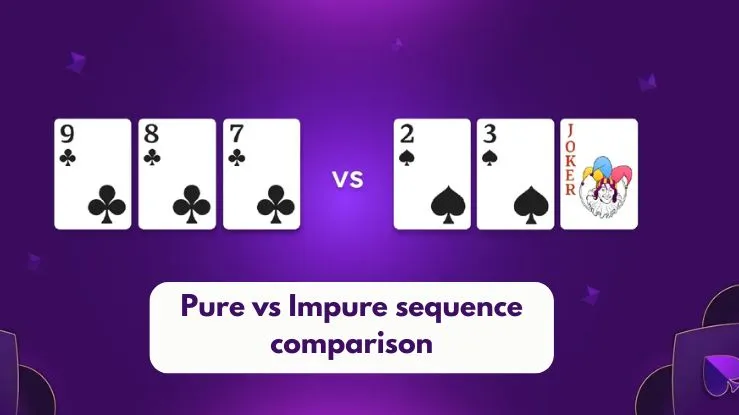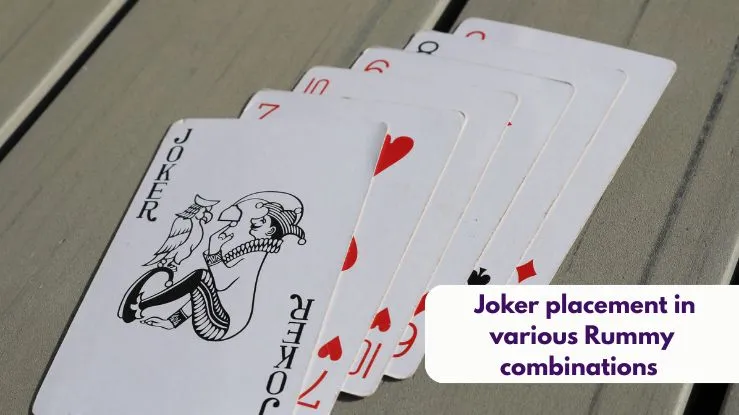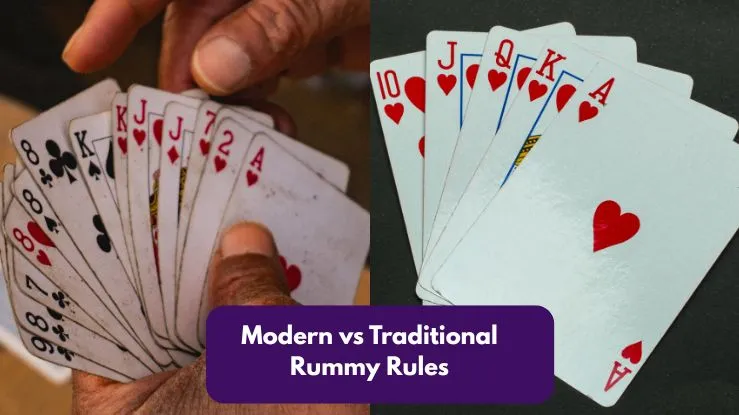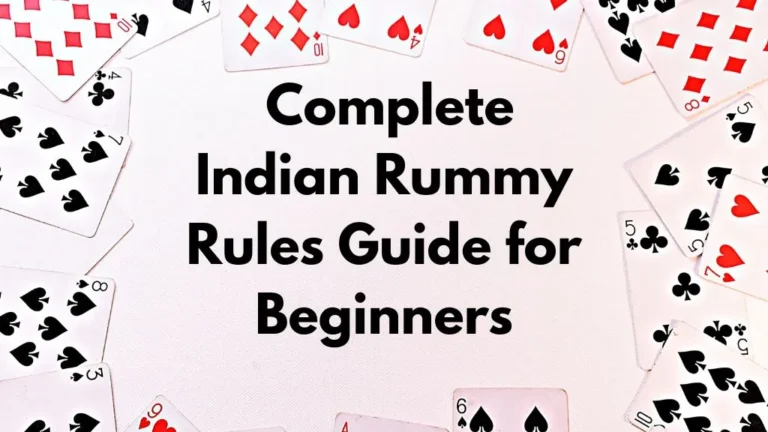Every experienced rummy player remembers their first game – the confusion of organizing 13 cards, the excitement of forming that first sequence, and often, the disappointment of an invalid declaration. Indian rummy has captivated card game enthusiasts for generations, combining strategic thinking with calculated risk-taking.
This comprehensive guide covers all essential rummy rules for beginners, from understanding basic 13 card rummy rules to implementing winning strategies in both online and offline games.
Understanding Indian Rummy Fundamentals
13 Card Rummy Rules and Setup
Indian rummy uses 2 standard decks of 52 cards plus 2 jokers, creating a 106-card playing set. These 13 card rummy rules work best with 2 to 6 players, though most competitive games involve 4-6 participants for optimal challenge.
Each player starts with exactly 13 cards. Think of these cards as building blocks – your success depends entirely on how well you arrange them into specific patterns.
Card Values in Rummy:
| Card Type | Point Value | Examples |
|---|---|---|
| Ace | 10 points | A♠, A♥, A♦, A♣ |
| Face Cards | 10 points each | King, Queen, Jack of any suit |
| Number Cards | Face value | 2♠ = 2 points, 9♥ = 9 points |
| Jokers | 0 points | Printed jokers + wild card |
Understanding these values becomes crucial during gameplay, especially when calculating penalty points or deciding which cards to discard.
The Core Objective
Your mission is straightforward: arrange all 13 cards into valid sequences and sets, then declare before your opponents complete their hands. However, achieving this requires understanding specific combination rules that separate winning hands from losing ones.
How to Build Winning Combinations
Mastering Pure Sequences
A pure sequence forms the backbone of every winning rummy hand. This combination requires three or more consecutive cards from the same suit, assembled without using any jokers.
Valid Pure Sequences:
- 4♥ 5♥ 6♥ (three consecutive hearts)
- 9♠ 10♠ J♠ Q♠ (four consecutive spades)
- A♦ 2♦ 3♦ (ace starting a sequence)
Invalid Pure Sequences:
- 4♥ 5♠ 6♥ (mixed suits break the rule)
- 4♥ Joker 6♥ (jokers invalidate purity)
- Q♠ K♠ A♠ 2♠ (ace cannot wrap around)
Many beginners struggle with the “purity” concept. Remember: even one joker transforms your pure sequence into an impure one, potentially costing you the game.

Creating Impure Sequences
Once you’ve secured your pure sequence foundation, impure sequences become valuable tools for organizing remaining cards. These follow identical consecutive rules but permit joker substitutions.
Practical Examples:
- 4♥ Joker 6♥ (joker replacing missing 5♥)
- 7♠ 8♠ Joker 10♠ (joker substituting for 9♠)
- A♠ 2♠ Joker (joker representing 3♠)
Smart players often use impure sequences to handle problematic cards that don’t fit naturally into pure sequences.
Forming Strategic Sets
Sets consist of three or four cards sharing the same rank but representing different suits. Unlike sequences, sets don’t require consecutive ordering – only matching numbers or face cards. This flexibility makes sets valuable tools in the rummy card game for organizing difficult hands.
Winning Set Examples:
- K♠ K♥ K♦ (three kings from different suits)
- 7♠ 7♥ 7♦ 7♣ (complete four-seven set)
- 5♠ Joker 5♦ (joker substituting for missing 5♥ or 5♣)
Common Set Mistakes:
- K♠ K♠ K♥ (duplicate suits invalidate the set)
- 5♠ 6♥ 7♦ (this creates a sequence, not a set)
Rummy Joker Rules and Strategic Management
Understanding Joker Types
Rummy features two distinct joker categories, each serving identical functions but originating differently.
Printed Jokers: Standard joker cards included in every deck.
Wild Card Jokers: At each game’s beginning, one card rank gets randomly selected as the wild card. All cards of that rank become jokers for the entire round.
Effective Joker Usage
Experienced players treat jokers as precious resources rather than automatic solutions. Here’s how to maximize their value:
- Reserve jokers for completing impure sequences when natural cards aren’t available
- Avoid using jokers in sets if you can form them naturally
- Never waste jokers in positions where common cards could work
- Consider saving jokers for high-value card substitutions

Step-by-Step Gameplay Process
Game Initialization Sequence
The game begins with systematic preparation that determines each round’s dynamics:
- Card Distribution: Deal 13 cards to each player
- Deck Formation: Arrange remaining cards face-down as the closed deck
- Open Deck Creation: Place one card face-up to start the discard pile
- Wild Card Selection: Reveal the next card to establish the round’s wild card joker
Turn-by-Turn Actions
Each player’s turn involves two mandatory phases that drive the game forward:
Phase 1: Card Acquisition Choose between drawing from the closed deck (mystery card) or taking the visible top card from the open deck. This decision often reveals your strategy to observant opponents.
Phase 2: Card Disposal Discard exactly one card onto the open deck. Your discard choice can either help or hinder other players’ progress.
The beauty of rummy lies in these simple mechanics creating complex strategic decisions. Every draw and discard sends signals about your hand’s development.
Achieving Valid Declaration
Winning requires arranging your 13 cards according to specific pattern requirements:
- Minimum 2 sequences (at least one must be pure)
- All remaining cards must form valid sets or additional sequences
- Zero ungrouped cards can remain unmatched
Popular Winning Arrangements:
- 2 sequences + 2 sets (most common)
- 3 sequences + 1 set (sequence-heavy strategy)
- 1 pure sequence + 1 impure sequence + 2 sets (balanced approach)
Rummy Points Calculation and Scoring System
Basic Scoring System
Understanding rummy points calculation becomes crucial for both competitive play and casual games. The scoring system incentivizes quick, efficient play while penalizing poor decisions:
Winner’s Reward: 0 points (the ultimate goal) Other Players: Points equal their ungrouped cards’ total value
Penalty Structure
| Situation | Point Penalty |
|---|---|
| Invalid Declaration | 80 points |
| No Pure Sequence | 80 points |
| First Drop (early exit) | 20 points |
| Middle Drop (mid-game exit) | 40 points |
| Missed Turn | 20 points |
Smart players calculate potential penalties before making risky moves. Sometimes accepting a 20-point first drop beats risking 80 points from an impossible hand.
Advanced Strategic Techniques
Opponent Observation Methods
Successful rummy players develop keen observation skills that provide competitive advantages:
- Track discarded cards to understand what opponents need or avoid
- Monitor picking patterns – players taking from open deck reveal their strategies
- Notice hesitation patterns during card selection phases
- Watch for defensive discarding when players avoid helping others
Card Priority Framework
Experienced players follow hierarchical thinking when making decisions:
- Pure sequence completion takes absolute priority
- High-value card disposal minimizes penalty risks
- Middle-range cards (5-9) offer maximum combination flexibility
- Joker optimization maximizes these valuable resources
Risk Assessment Skills
Every move in rummy involves calculated risk. Consider these factors:
- Potential loss points if the round ends immediately
- Probability of completing current sequences or sets
- Opponent proximity to declaration based on their visible actions
- Available cards remaining in closed and open decks
Common Pitfalls and Solutions
The Pure Sequence Trap
New players often get excited about forming multiple sequences while forgetting the pure sequence requirement. This oversight results in automatic 80-point penalties regardless of hand quality.
Solution: Always prioritize pure sequence formation before pursuing other combinations.
Joker Hoarding Syndrome
Some players collect multiple jokers thinking they guarantee victory. However, jokers cannot create pure sequences, and hoarding them often leads to incomplete hands.
Solution: Use jokers strategically rather than collecting them for collection’s sake.
Also Read-
Transparent Discarding
Beginners frequently discard cards that obviously benefit opponents. This generous approach rarely leads to victories.
Solution: Analyze each discard’s potential impact on other players before releasing cards.
Online Rummy Rules vs Traditional Rummy Experience
Online Rummy Rules and Platform Benefits
Modern online rummy rules remain identical to traditional gameplay, but digital platforms offer several advantages for learning and practicing:
- Automatic validation prevents illegal moves and declarations
- Instant scoring eliminates manual calculation errors
- Practice modes allow skill development without stakes
- Global competition connects you with players worldwide
Traditional Card Game Advantages
Physical rummy maintains certain irreplaceable qualities:
- Social interaction creates memorable gaming experiences
- Tactile engagement with cards feels more authentic to many players
- Custom rule flexibility allows house variations
- No technology dependence means games can happen anywhere

Tournament Rummy Rules and Competitive Play
Understanding Tournament Format
Tournament rummy maintains the same fundamental rules while introducing structured competition elements. Rummy rules for tournaments typically include:
- Fixed time limits for each round to maintain pace
- Elimination systems where highest-scoring players get removed
- Entry fees and prize structures that reward consistent performance
- Multiple round formats testing endurance and adaptability
Tournament play requires faster decision-making and more aggressive strategies compared to casual games. Players must balance risk-taking with point management across multiple rounds.
Competitive Strategy Adjustments
Tournament environments demand modified approaches to standard rummy tactics:
- Quicker declarations become necessary due to time constraints
- Point minimization takes priority over perfect hand optimization
- Opponent observation becomes more critical with elimination stakes
- Conservative play in early rounds preserves tournament life
Mastering Rummy Through Practice
Beginner Development Path
- Start with free practice games to learn without pressure
- Focus on pure sequence formation until it becomes automatic
- Gradually incorporate joker strategies as comfort increases
- Practice against various skill levels to adapt your approach
Understanding the complete rummy card game rules takes time and patience. Each game provides opportunities to apply theoretical knowledge in practical situations.
Skill Progression Milestones
- Basic Level: Understand all rules and can form valid combinations
- Intermediate Level: Recognize opponent patterns and optimize card usage
- Advanced Level: Execute complex strategies and manage multiple game variables
- Expert Level: Adapt tactics dynamically based on changing game conditions
Frequently Asked Questions
How many players can participate in a single rummy game? Standard rummy accommodates 2 to 6 players. Rummy rules for 2 players are identical to larger groups, though the game becomes more predictable with fewer participants. Most players prefer 4-6 player games for optimal competitive balance.
What are the specific rummy rules for 4 players? Four-player rummy follows the same fundamental rules but creates an ideal balance of competition and card availability. Each player still receives 13 cards, and the strategic dynamics become more complex with multiple opponents to observe.
Can jokers be used in pure sequences? Absolutely not. Pure sequences must contain only natural consecutive cards from the same suit, without any joker substitutions.
What happens when you declare with an invalid arrangement? Invalid declarations result in automatic round loss and 80 penalty points, regardless of your actual ungrouped card values.
How is the wild card joker determined each round? After dealing cards and establishing the open deck, the next card from the closed deck determines that round’s wild card rank.
Can aces be used in the middle of sequences? No. Aces function only at sequence beginnings (A-2-3) or endings (Q-K-A), but cannot wrap around (K-A-2 is invalid).
Are there different rummy rules for cash games versus free games? The core gameplay remains identical regardless of stakes. However, cash game players tend to be more cautious with their moves, making the psychological aspects of rummy more pronounced.
Building Long-term Rummy Success
Mental Approach Development
Successful rummy requires more than rule memorization – it demands strategic thinking and emotional control. Develop patience for difficult hands, maintain focus during long games, and learn from both victories and defeats.
Continuous Learning Mindset
Every rummy game offers learning opportunities. Pay attention to successful opponent strategies, analyze your decision-making patterns, and adapt your approach based on results.
The most accomplished rummy players remain students of the game, constantly refining their techniques and expanding their strategic repertoire.
Community Engagement
Join rummy communities, participate in tournaments, and engage with other enthusiasts. Shared experiences accelerate learning and provide insights into advanced techniques.
Conclusion
Mastering rummy rules opens the door to one of India’s most engaging card games. Success requires understanding fundamental combinations, developing strategic thinking, and practicing consistently across various playing situations.
Whether you prefer digital platforms or traditional card tables, these rules and strategies provide the foundation for enjoyable and competitive rummy experiences. Start with basic rule mastery, gradually incorporate advanced techniques, and remember that every expert was once a beginner learning these same fundamental concepts.
The journey from novice to skilled rummy player rewards patience, practice, and strategic thinking. Apply these guidelines consistently, and you’ll soon find yourself competing confidently in any rummy game.


